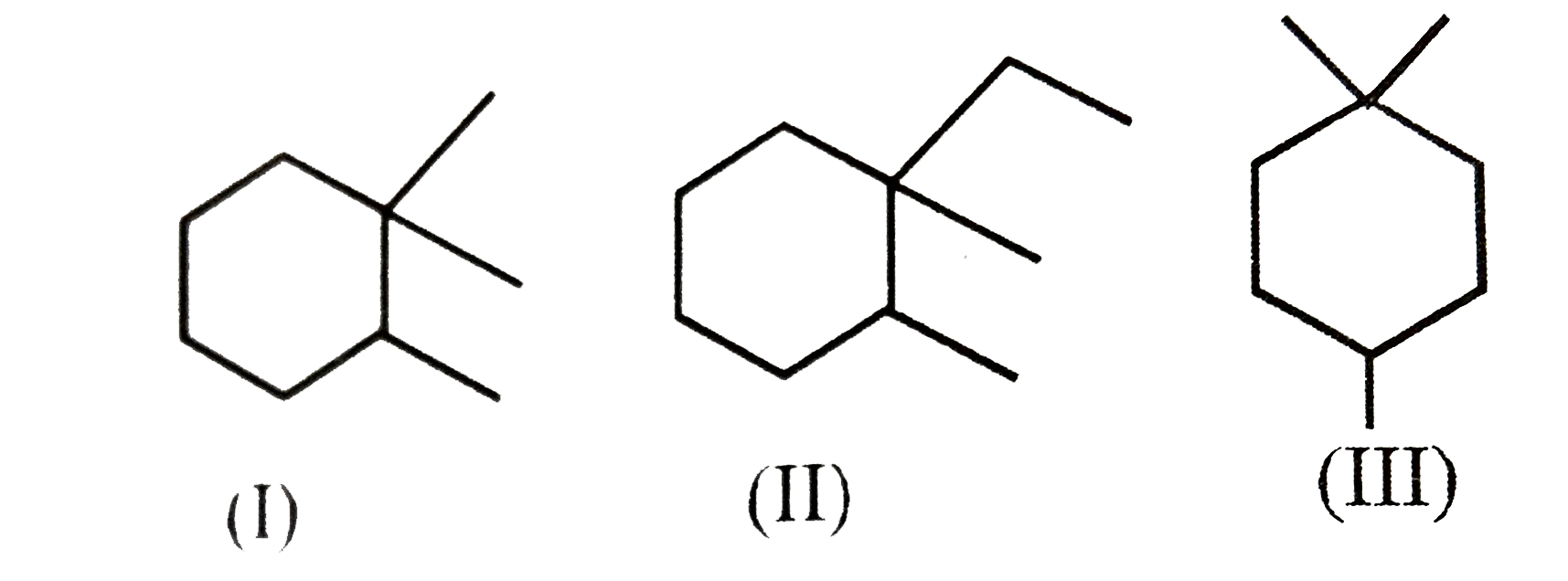The compound (s) the exhibit(s) geometrical isomerism is (are ) :
[Pt(en)Cl2]
[Pt(en)2]Cl2
[Pt(en)2Cl2]Cl2
[Pt(NH3)2Cl2]
The correct Answer is:C, D
To determine which compounds exhibit geometrical isomerism, we need to analyze each compound's structure and the arrangement of ligands around the central metal atom. Geometrical isomerism typically occurs in coordination compounds where ligands can be arranged in different spatial orientations, leading to cis and trans forms.
1. Understanding Geometrical Isomerism:
- Geometrical isomerism occurs when ligands can be arranged in different spatial orientations around a central atom, leading to distinct isomers.
- The two common forms are cis (where similar ligands are adjacent) and trans (where similar ligands are opposite).
2. Analyzing the First Compound: Pt(en)(Cl)₂:
- In this compound, ethylenediamine (en) is a bidentate ligand, meaning it binds through two sites.
- Since en occupies two coordination sites, the two Cl ligands cannot be arranged in a way that allows for cis or trans configurations.
- Conclusion: This compound does not exhibit geometrical isomerism.
3. Analyzing the Second Compound: Pt(en)₂:
- Here, we have two bidentate en ligands.
- The arrangement is square planar, and both en ligands will occupy opposite positions.
- Conclusion: This compound does not exhibit geometrical isomerism.
4. Analyzing the Third Compound: Pt(en)₂Cl₂:
- In this case, we have two bidentate en ligands and two Cl ligands.
- The Cl ligands can be arranged opposite each other, while the en ligands can also be opposite or adjacent.
- This allows for both cis (where Cl ligands are adjacent) and trans (where Cl ligands are opposite) configurations.
- Conclusion: This compound exhibits geometrical isomerism.
5. Analyzing the Fourth Compound: Pt(NH₃)₂Cl₂:
- This compound has two NH₃ ligands and two Cl ligands.
- Similar to the previous case, the NH₃ and Cl ligands can be arranged in a square planar structure.
- The NH₃ ligands can be opposite each other (trans) or adjacent (cis).
- Conclusion: This compound also exhibits geometrical isomerism.
Final Answer:
The compounds that exhibit geometrical isomerism are Pt(en)₂Cl₂ and Pt(NH₃)₂Cl₂.
- Geometrical isomerism occurs when ligands can be arranged in different spatial orientations around a central atom, leading to distinct isomers.
- The two common forms are cis (where similar ligands are adjacent) and trans (where similar ligands are opposite).
- In this compound, ethylenediamine (en) is a bidentate ligand, meaning it binds through two sites.
- Since en occupies two coordination sites, the two Cl ligands cannot be arranged in a way that allows for cis or trans configurations.
- Conclusion: This compound does not exhibit geometrical isomerism.
- Here, we have two bidentate en ligands.
- The arrangement is square planar, and both en ligands will occupy opposite positions.
- Conclusion: This compound does not exhibit geometrical isomerism.
- In this case, we have two bidentate en ligands and two Cl ligands.
- The Cl ligands can be arranged opposite each other, while the en ligands can also be opposite or adjacent.
- This allows for both cis (where Cl ligands are adjacent) and trans (where Cl ligands are opposite) configurations.
- Conclusion: This compound exhibits geometrical isomerism.
- This compound has two NH₃ ligands and two Cl ligands.
- Similar to the previous case, the NH₃ and Cl ligands can be arranged in a square planar structure.
- The NH₃ ligands can be opposite each other (trans) or adjacent (cis).
- Conclusion: This compound also exhibits geometrical isomerism.
The compounds that exhibit geometrical isomerism are Pt(en)₂Cl₂ and Pt(NH₃)₂Cl₂.
Topper's Solved these Questions
- COORDINATION COMPOUNDSBOOK - RESONANCE ENGLISHCHAPTER - COORDINATION COMPOUNDSEXERCISE - Exercise-3 Part-I: JEE(Advance ) /IIT-JEE Problem (Comprehenion )
1 Videos
- COORDINATION COMPOUNDSBOOK - RESONANCE ENGLISHCHAPTER - COORDINATION COMPOUNDSEXERCISE - Exercise-3 Part-II: JEE(Main ) /AIEEE Problem
36 Videos
- COORDINATION COMPOUNDSBOOK - RESONANCE ENGLISHCHAPTER - COORDINATION COMPOUNDSEXERCISE - Exercise-2 Part-IV: Comprehension -4
1 Videos
- CHEMISTRY IN EVERYDAY LIFEBOOK - RESONANCE ENGLISHCHAPTER - CHEMISTRY IN EVERYDAY LIFEEXERCISE - ORGANIC CHEMISTRY(Chemistry in every day life)
31 Videos
- D & F BLOCK ELEMENTSBOOK - RESONANCE ENGLISHCHAPTER - D & F BLOCK ELEMENTSEXERCISE - ORGANIC CHEMISTRY(Aldehydes , Ketones, Carboxylic acid)
15 Videos
Similar Questions
Knowledge Check
Geometrical isomerism is caused
Aby restricted rotation around C=C bondBby the presence of one asymmetric carbon atomCdue to the differennt groups attached to the same functional groupDby swing of hydrogenn atom between two divalent atoms.The compound which does not exhibit optical isomerism is
ACH3CHBrCOOHBCH2ClCH2COOHCCH3CHOHCOOC2H5DCH3CHOHCOOHThe alkene that exhibits geometrical isomerism is
ApropeneB2-methylpropeneC2-buteneD2-methyl-2-butene


